SAR-E-SANG Mine Afghanistan
Sar-e-Sang is a region located in the Hindu Kush mountains of Afghanistan, known for its deposits of lapis lazuli. Lapis lazuli is a blue metamorphic rock that has been prized for its intense blue color for thousands of years.
The mines of Sar-e-Sang have been a major source of lapis lazuli for several millennia, with evidence of mining activities dating back to the Bronze Age. The stone was highly valued by ancient civilizations, such as the Egyptians and Sumerians, who used it for jewelry, amulets, and other decorative objects.
In modern times, the mines of Sar-e-Sang have faced various challenges due to conflict and instability in Afghanistan. However, efforts are being made to revive and develop the mining industry in the region. The lapis lazuli from Sar-e-Sang continues to be highly sought after by jewelers and collectors around the world.Locality Terminology:
In the context of Sar-e-Sang, locality terminology can refer to the various mines and mining sites within the region. Some of the locality names associated with lapis lazuli mining in Sar-e-Sang include:- Kuran wa Munjan: This locality refers to the valley and town of Kuran wa Munjan, which is located in the Badakhshan province of Afghanistan. Lapis lazuli from this area is known for its high quality and intense blue color.
- Kokcha Valley: This valley is located in the northeast of Afghanistan and is known for its deposits of lapis lazuli. The Kokcha River runs through the valley and has eroded the surrounding mountains to expose the lapis lazuli deposits.
- Sar-e-Sang: This locality refers to the entire region in the Hindu Kush mountains where lapis lazuli is found. The name Sar-e-Sang means "top of the stone" in Persian and is a reference to the high altitude of the mining sites.
- Ghezni Province: This province is located in central Afghanistan and is known for its deposits of lapis lazuli. The stone from this area is often lighter in color than lapis from other localities in Sar-e-Sang.
Location:
Sar-e-Sang is a region located in the central Hindu Kush mountains of Afghanistan, near the border with Tajikistan. The area is located in the Badakhshan province of Afghanistan, which is in the northeastern part of the country.
Sar-e-Sang is a remote and mountainous area that can only be accessed by rugged and difficult terrain, which has contributed to its isolation and difficulty in developing its mining industry. The region is known for its deposits of lapis lazuli, which have been mined there for thousands of years.
Despite the challenges, the Afghan government and international organizations are working to develop the mining industry in Sar-e-Sang, in order to create jobs and generate income for the local communities. The lapis lazuli from Sar-e-Sang is highly prized for its intense blue color and is exported to markets around the world.
Mines Operator:
Historically, the mines in Sar-e-Sang were operated by various local groups and communities. In ancient times, lapis lazuli from the region was traded along the Silk Road and was highly valued by neighboring civilizations.During the Soviet era, mining operations in Sar-e-Sang were nationalized and run by the Afghan government, with assistance from the Soviet Union. Following the withdrawal of Soviet troops in 1989, the mines were abandoned and left in disrepair.
In recent years, efforts have been made to revive and develop the mining industry in Sar-e-Sang. The Afghan government has granted licenses to various private companies and international organizations to explore and develop the lapis lazuli deposits in the region. Some of the companies involved in mining activities in Sar-e-Sang include:
- Turquoise Mountain: This is a non-profit organization that works to promote traditional crafts and cultural heritage in Afghanistan. They have been involved in reviving the lapis lazuli industry in Sar-e-Sang by training local artisans and miners.
- Afghan Lapis Lazuli: This is a private company that operates several mines in the Sar-e-Sang region. They specialize in producing high-quality lapis lazuli for export to international markets.
Sar e Sang Minerals
Lazurite:
Na6.Ca2,[AI6.Sig6O24]S2
Lazurite and haüyne form a continuous series and have the same chemical formula, except that lazurite has more sulfide than sulfate whereas haüyne has the reverse. All analyzed "lazurite" from Sar-e-Sang has proven to contain some sulfide but is nevertheless sulfate-dominant, so, strictly speaking, it is all sulfide-rich haüyne.
True sulfide-dominant lazurite has not yet been found in nature, so lazurite is really only a theoretical species; it can be synthesized
but is unstable, and thus unlikely to occur in nature p the name "lazurite" has been used for the blue component of lapis lazuli, and the International Mineralogical Association. has retained it as a valid species, so in this study we will comply with tradition and retain the term "lazurite" for sulfide rich hey Opaque, ultramarine-blue to midnight-blue and non-fluorescent with a bright blue streak.

Drivite:
NaMg3 Al6 (Si6 018) (ВО3,)3 (BО3)3ОН
In 2005 a Pakistani dealer brought a few dravite specimens reportedly from Sar-e-Sang to the Tucson Show. The lustrous, translucent, yellow-green dravite crystals to 3.5 cm (Moore, 2005) occur in a matrix of white schist, with diopside crystals. Dudley Blauwet saw specimens in Afghanistan in 2002 which are white matrix pieces imbedded yellow-green crystals resembling vesuvianite or garnets, later verified, as dravite: these specimens, like the 2005 ones, presumably are from the white schist occurrence.
Diopside: CaMgSi2,06
Diopside is a fairly common mineral in good crystals northeastern Afghanistan, including several localities in the kokcha Valley, and attractive specimens showing blocky, lustrous, pine-green diopside crystals in calcite and white marble matrix have emerged

Afghanite [(N,K)5.5Ca2.5 ,AI6,Si6,024 (SO4)1.5 CL1.5
The feldspathoid species afghanite, a member of the cancrinite sodalite group, was first characterized by Bariand et al. (1968) specimens from Mount Vesuvius in the Mineralogical Muse the University of Rome show transparent, colorless microcrystals of "davyne" which were later determined to be afghanite (Parodi et al., 1996), but Sar-e-Sang is the type locality for the species as described by Bariand's group.

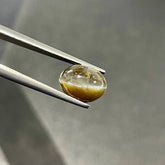
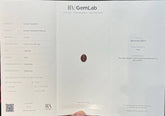
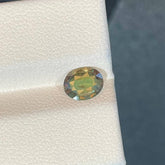
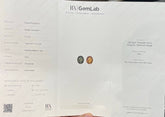
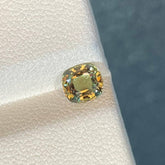
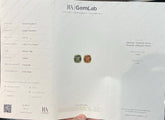
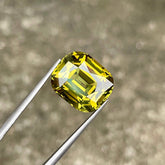
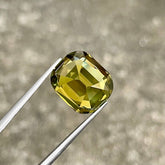
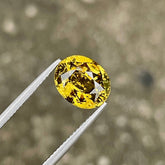
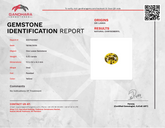

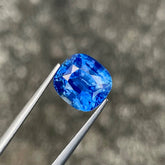

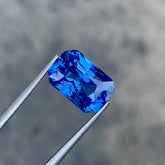

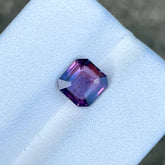

Leave a comment
Please note, comments need to be approved before they are published.